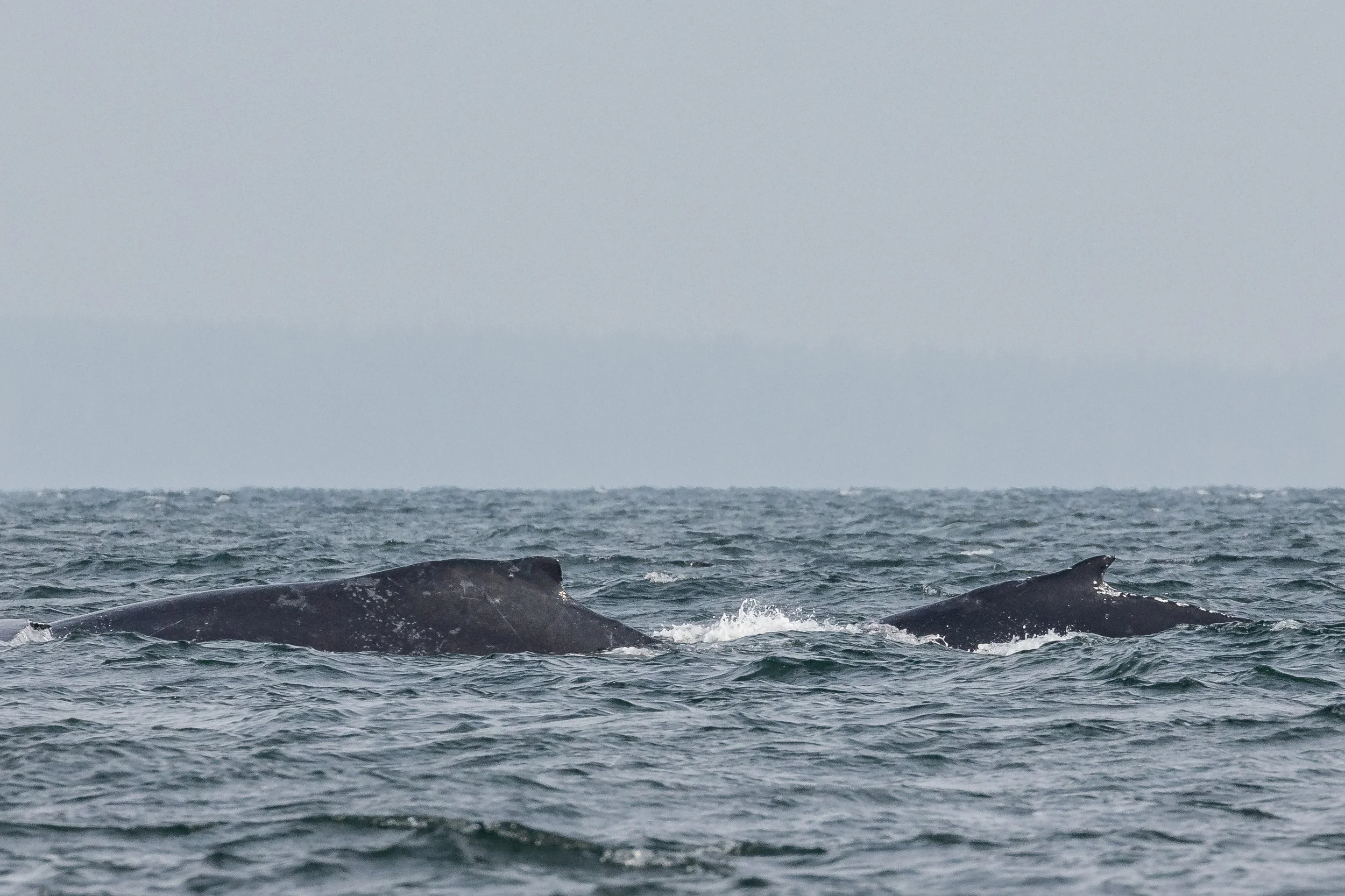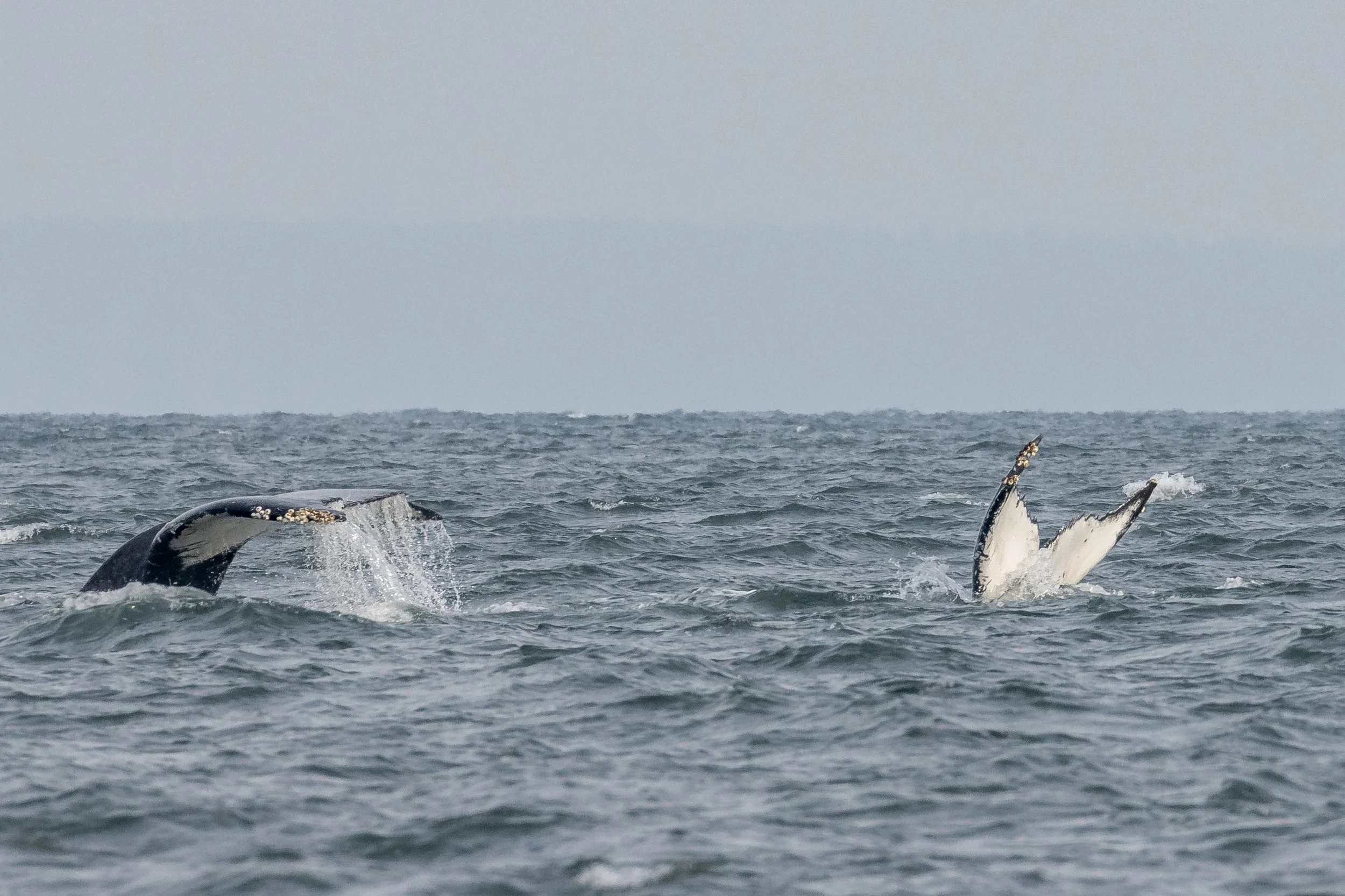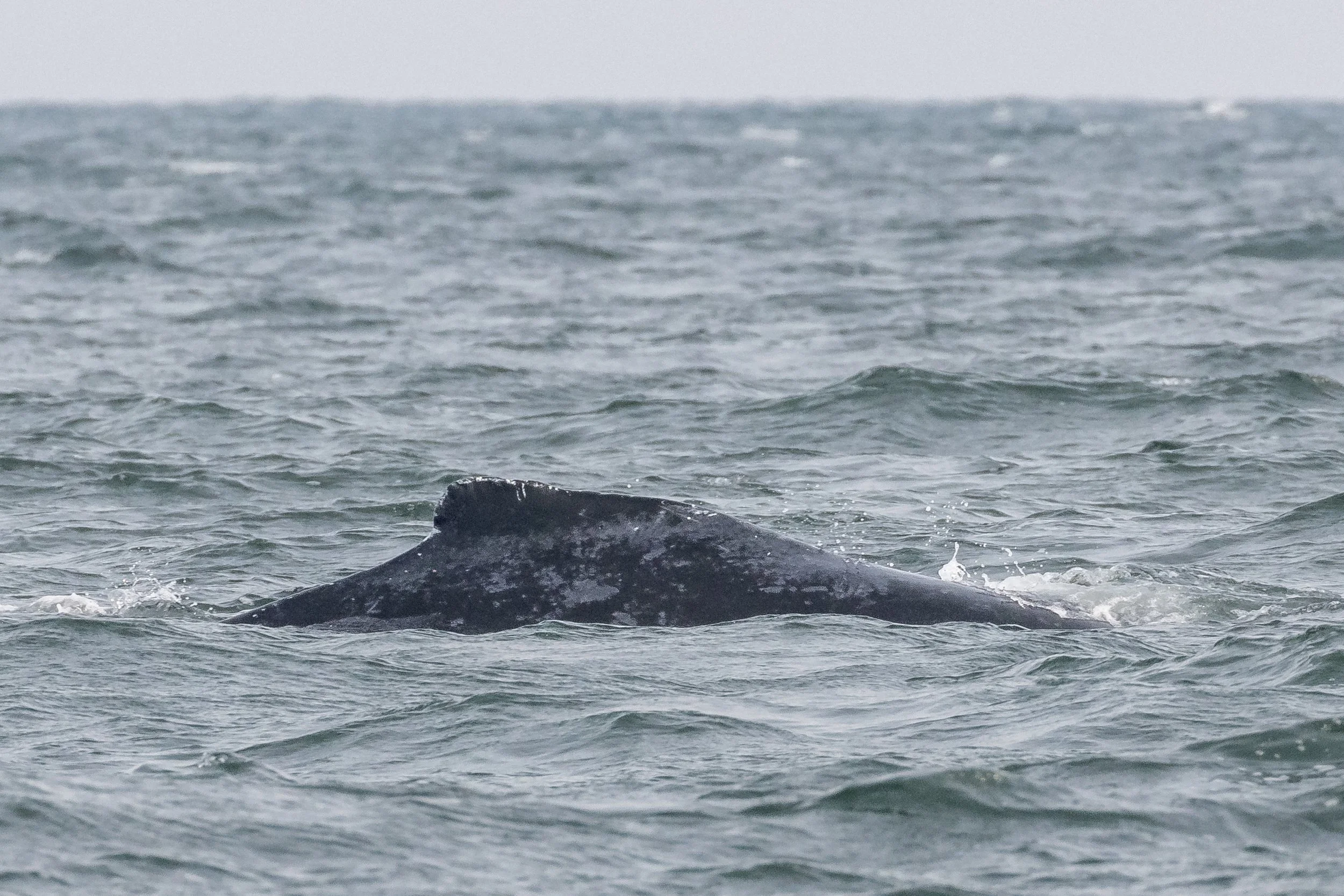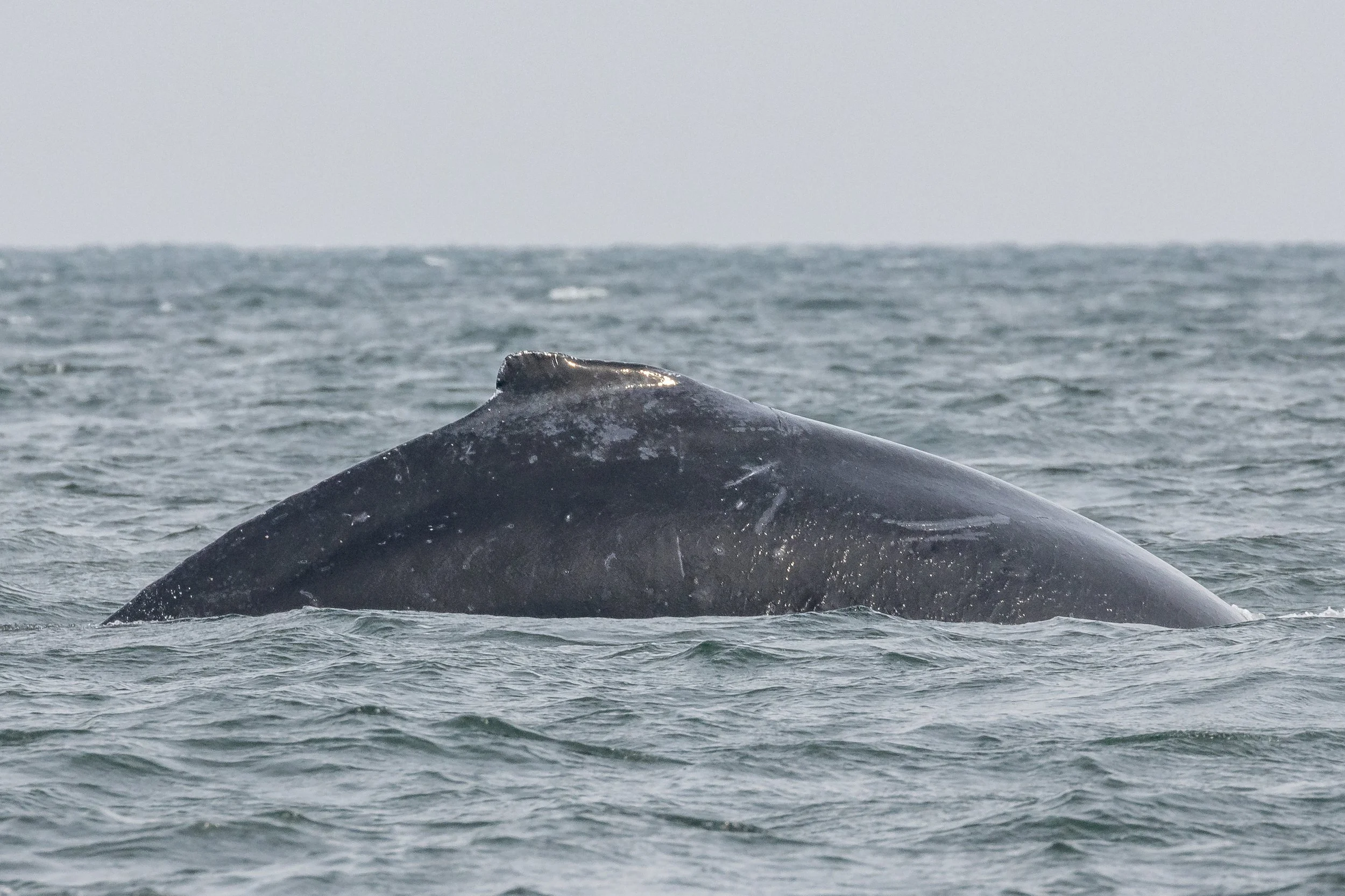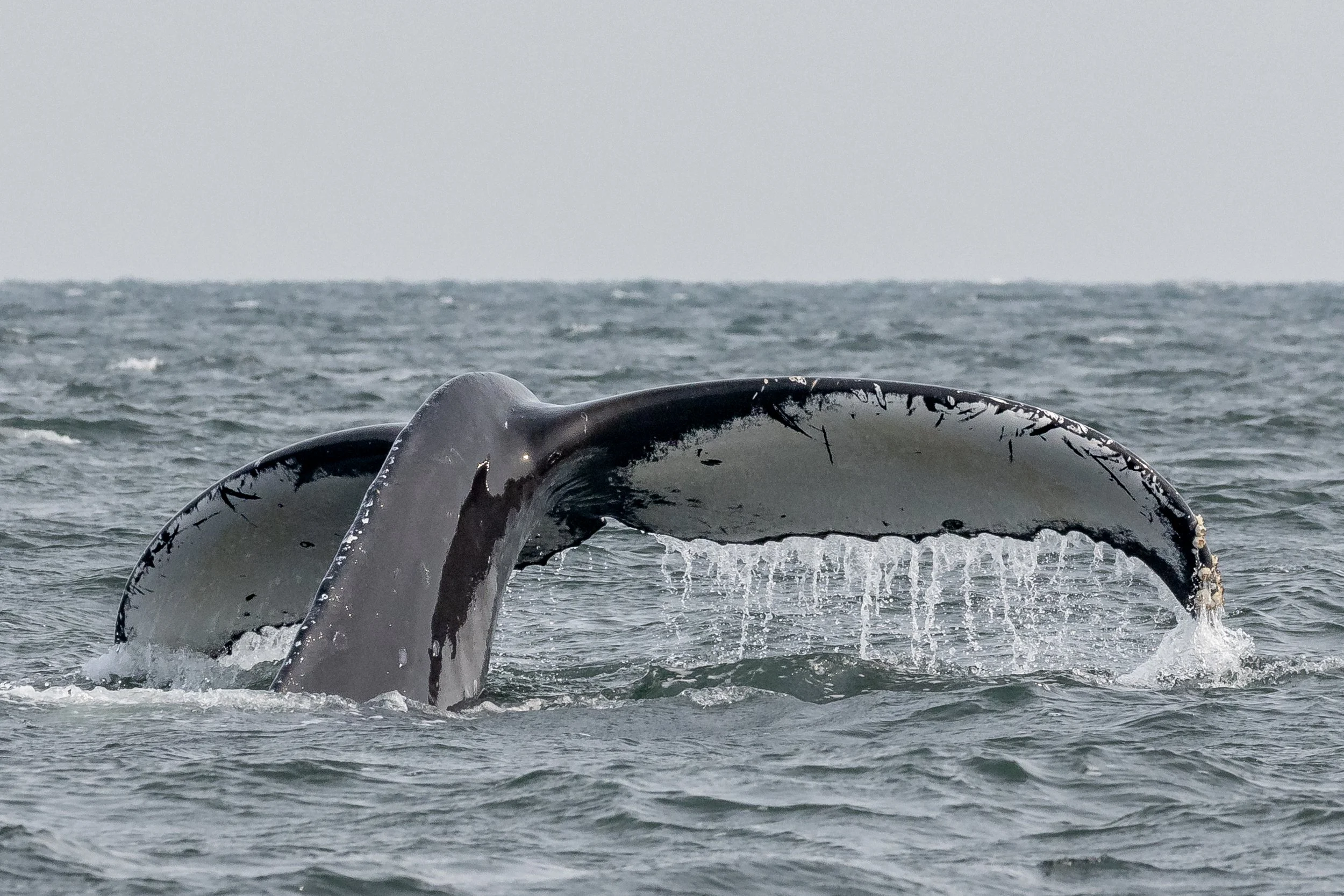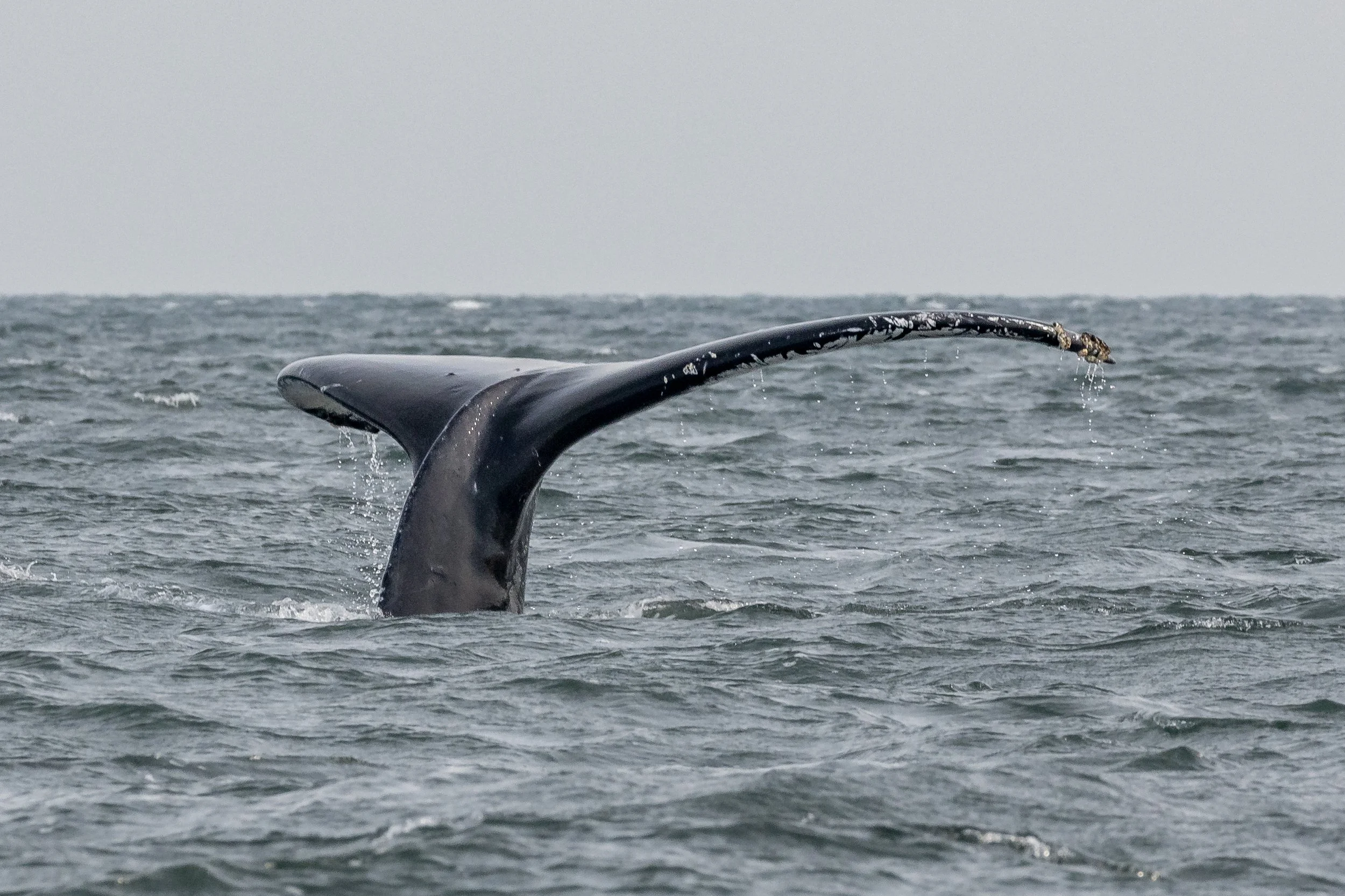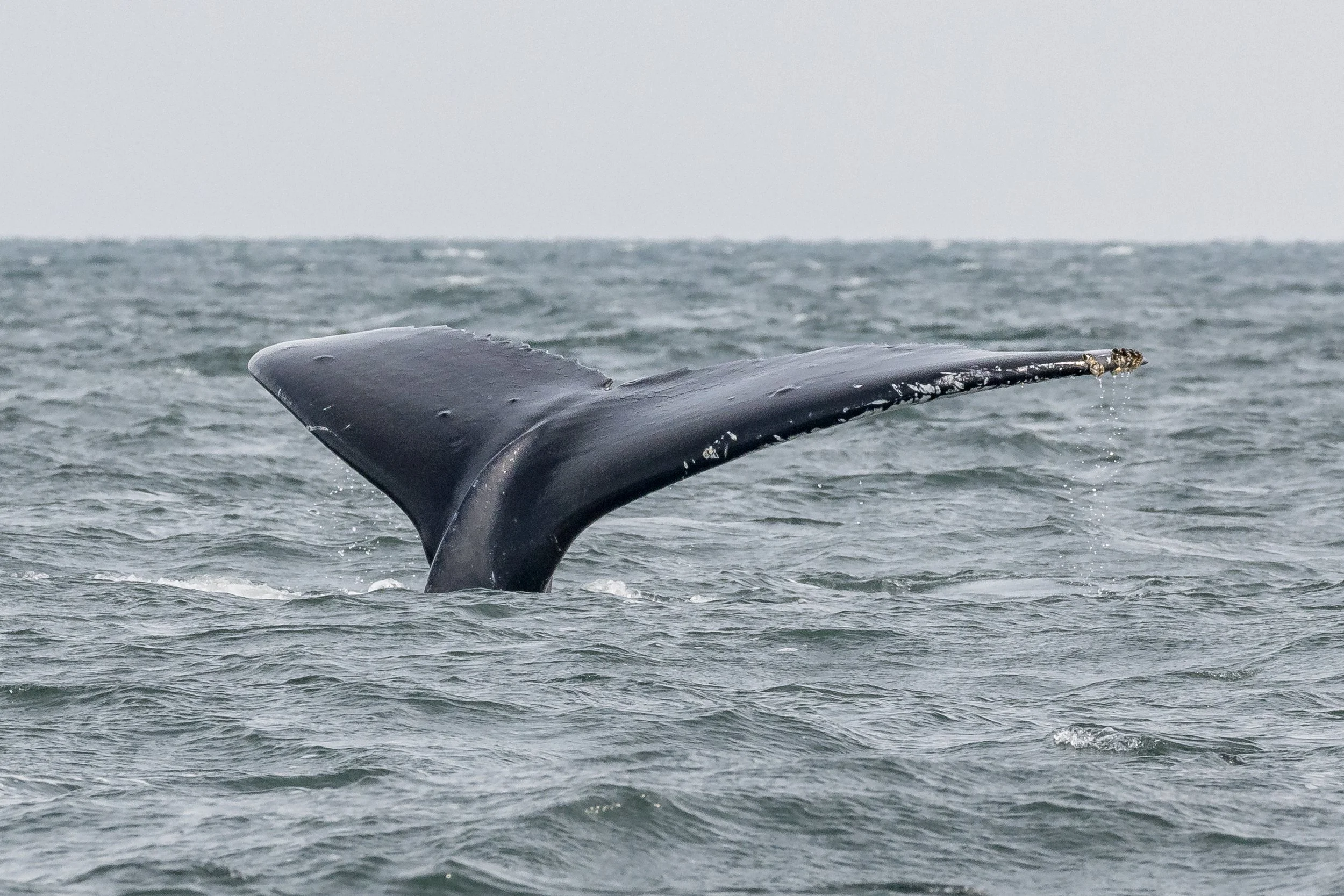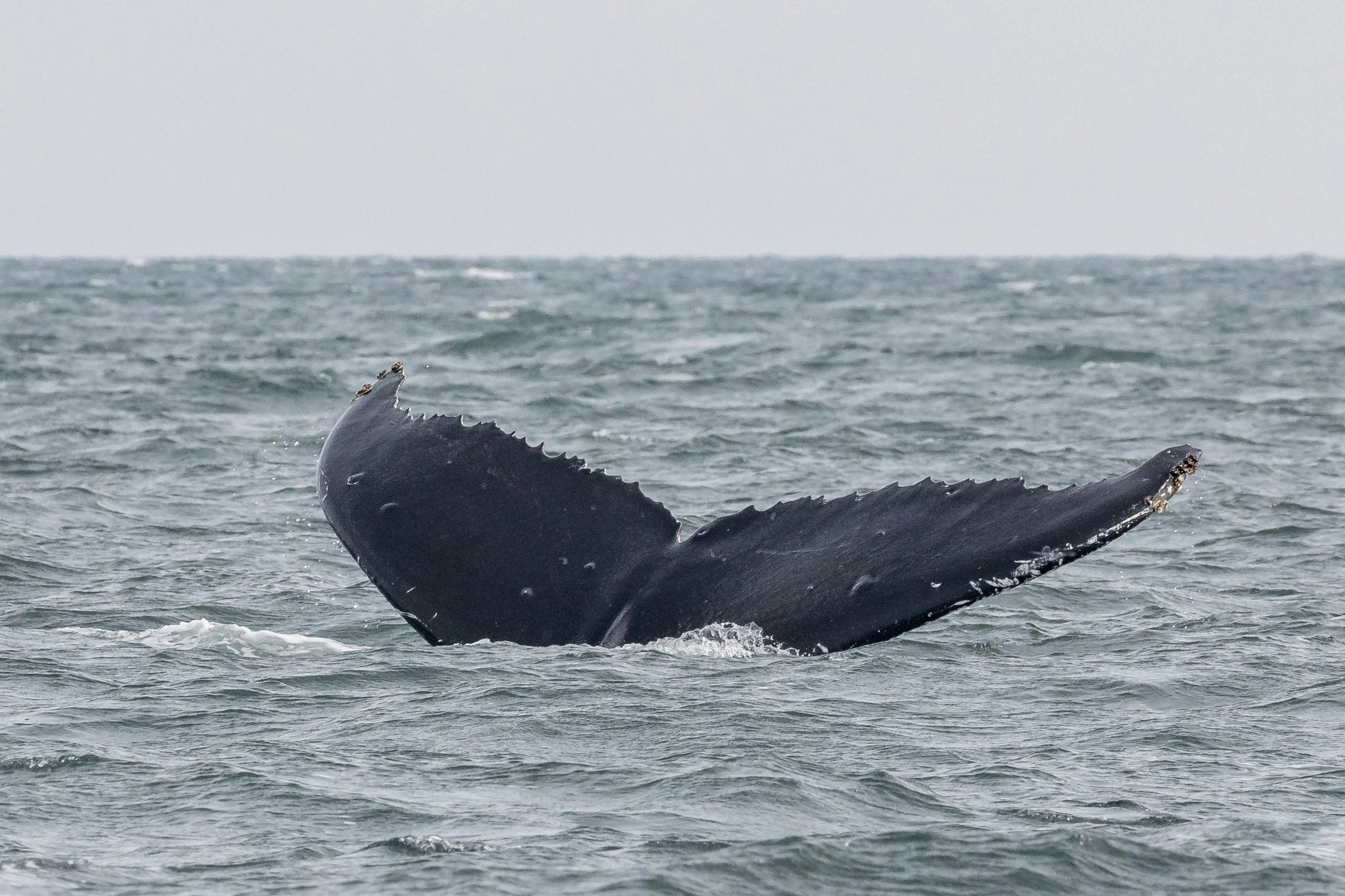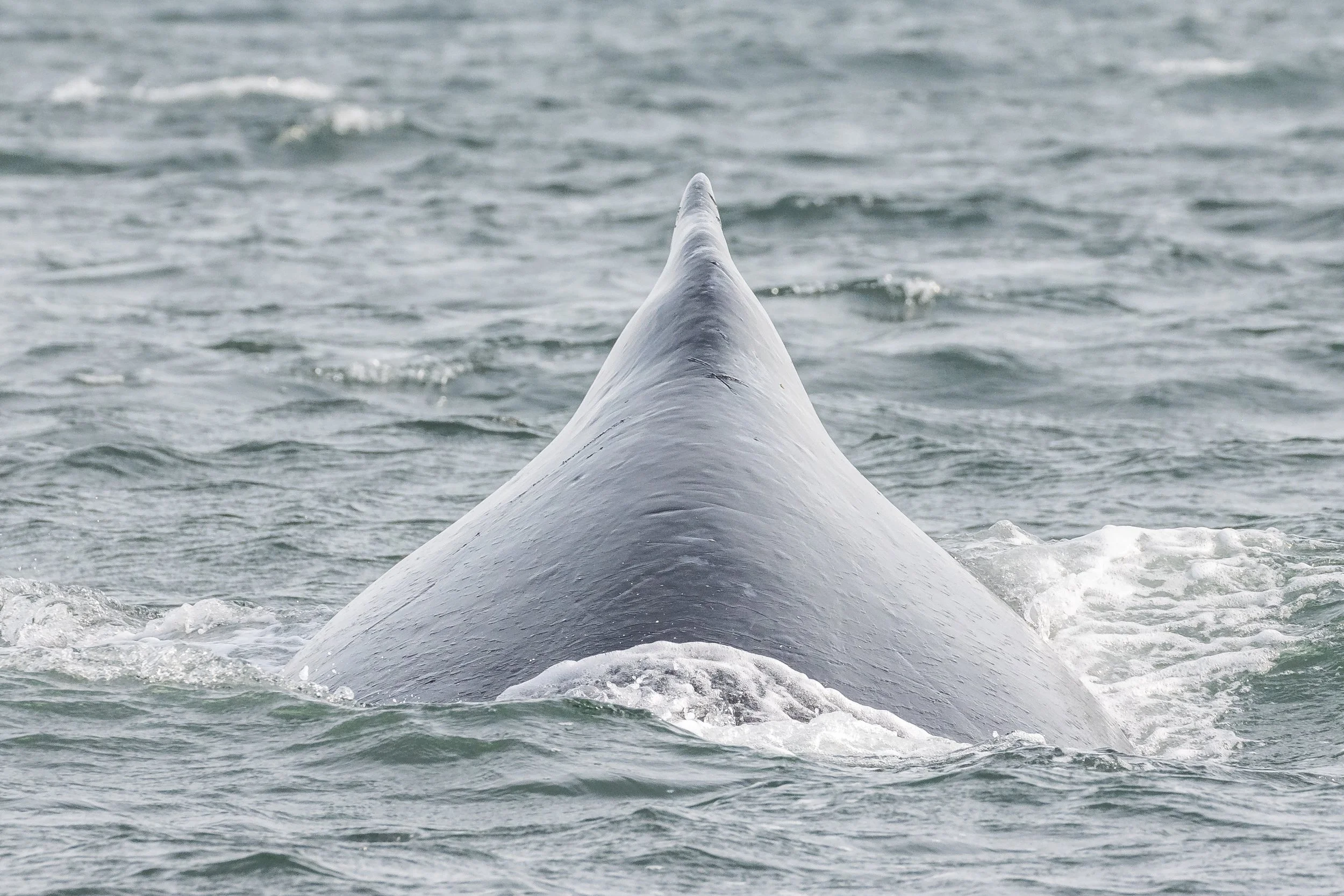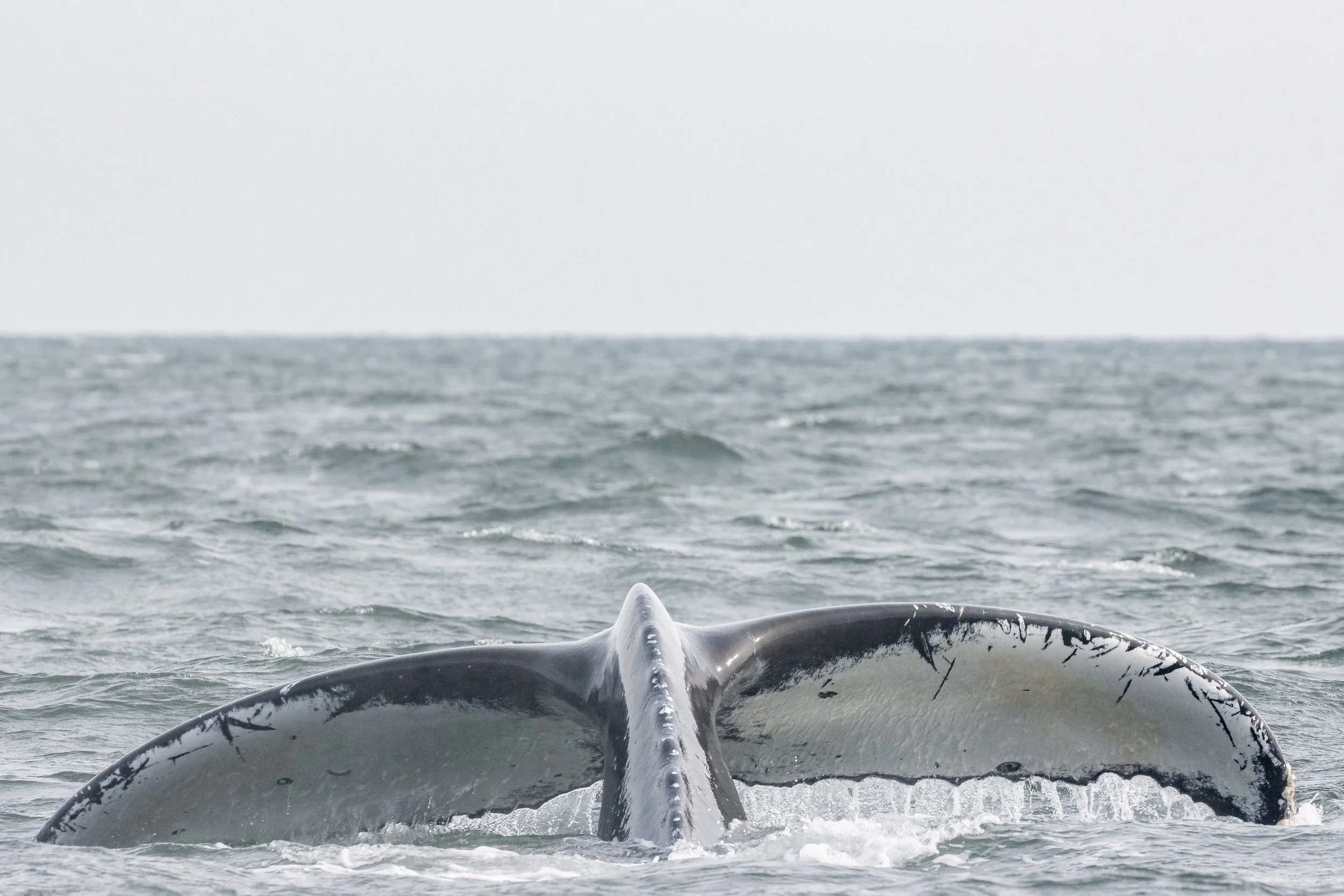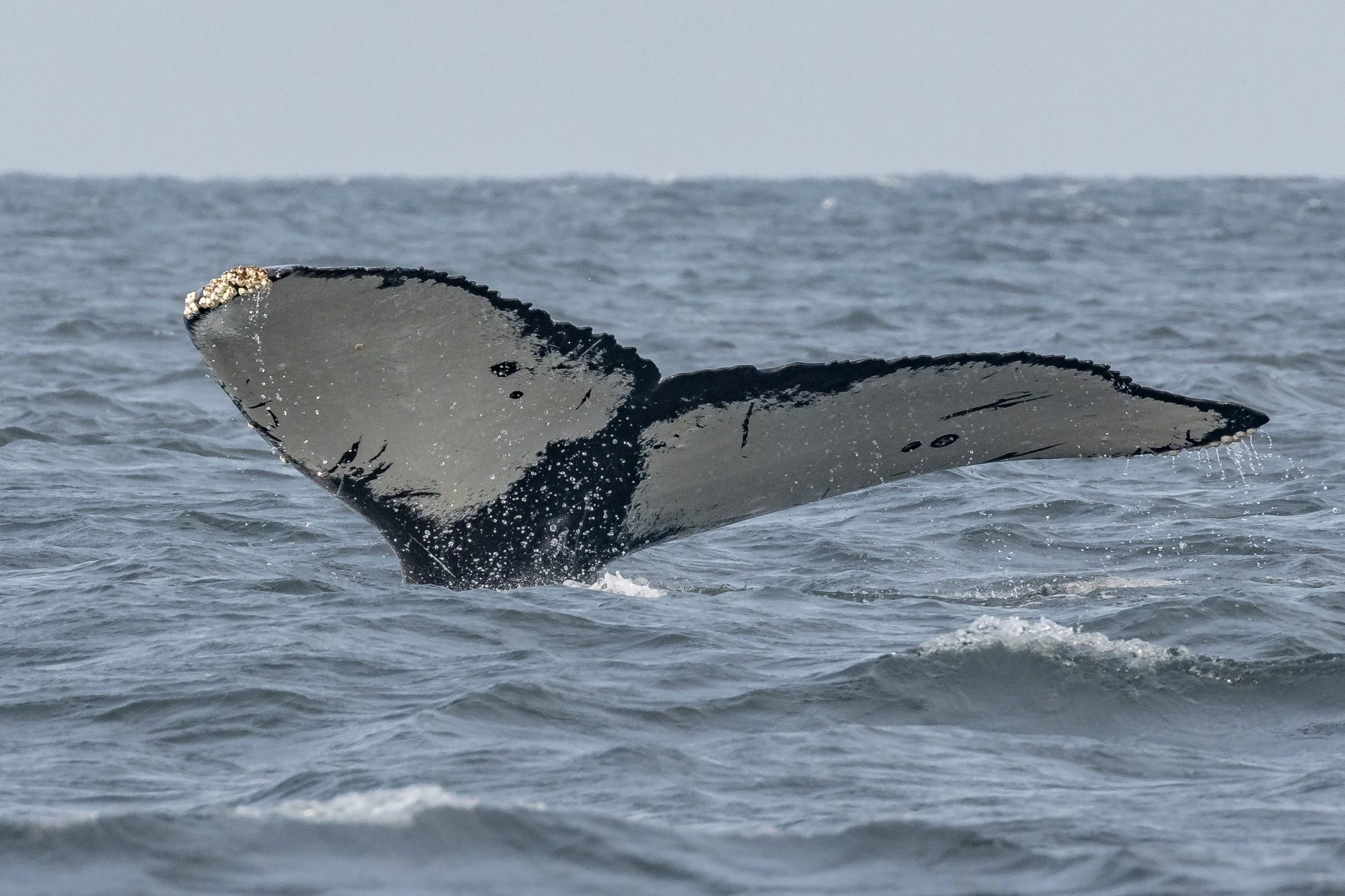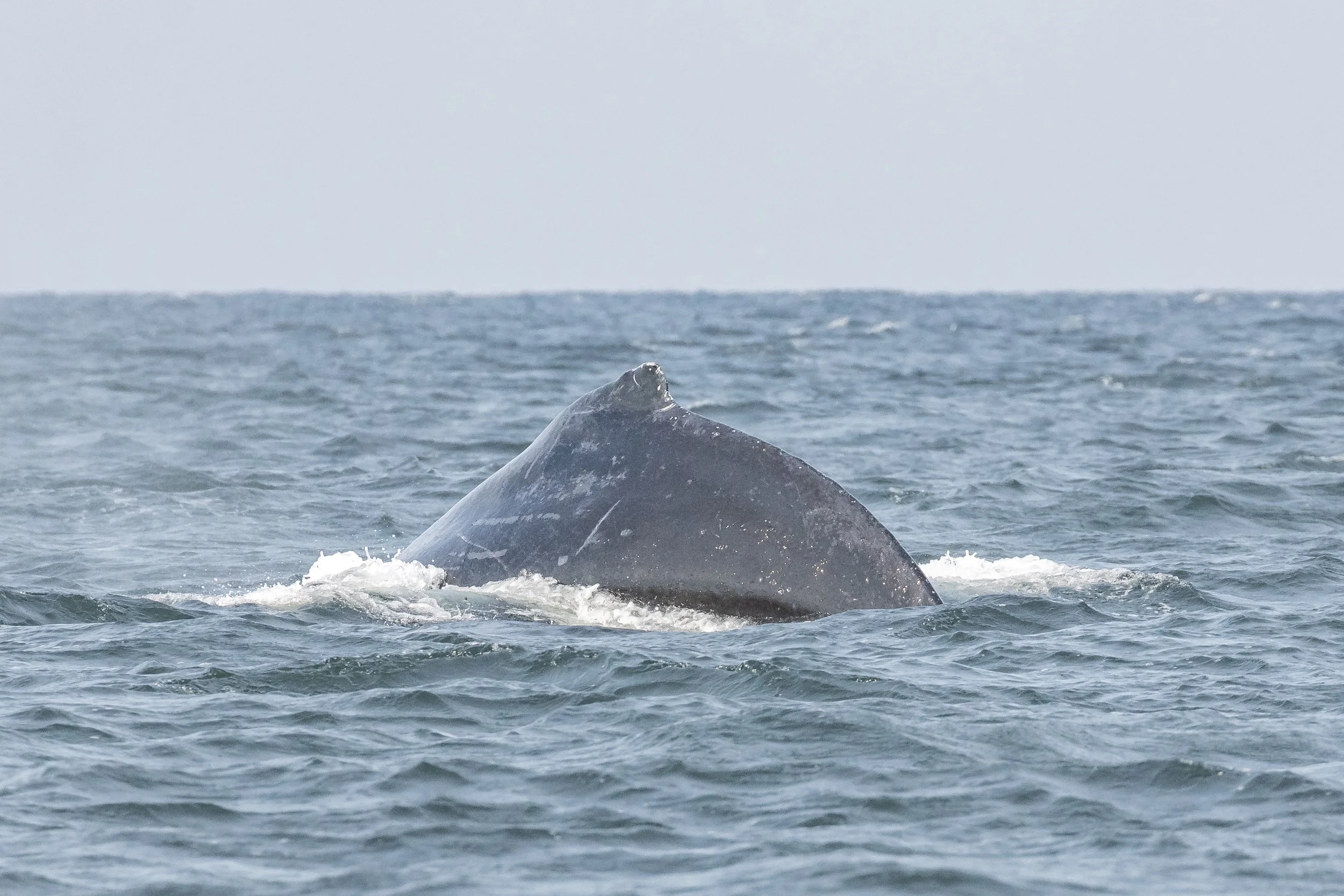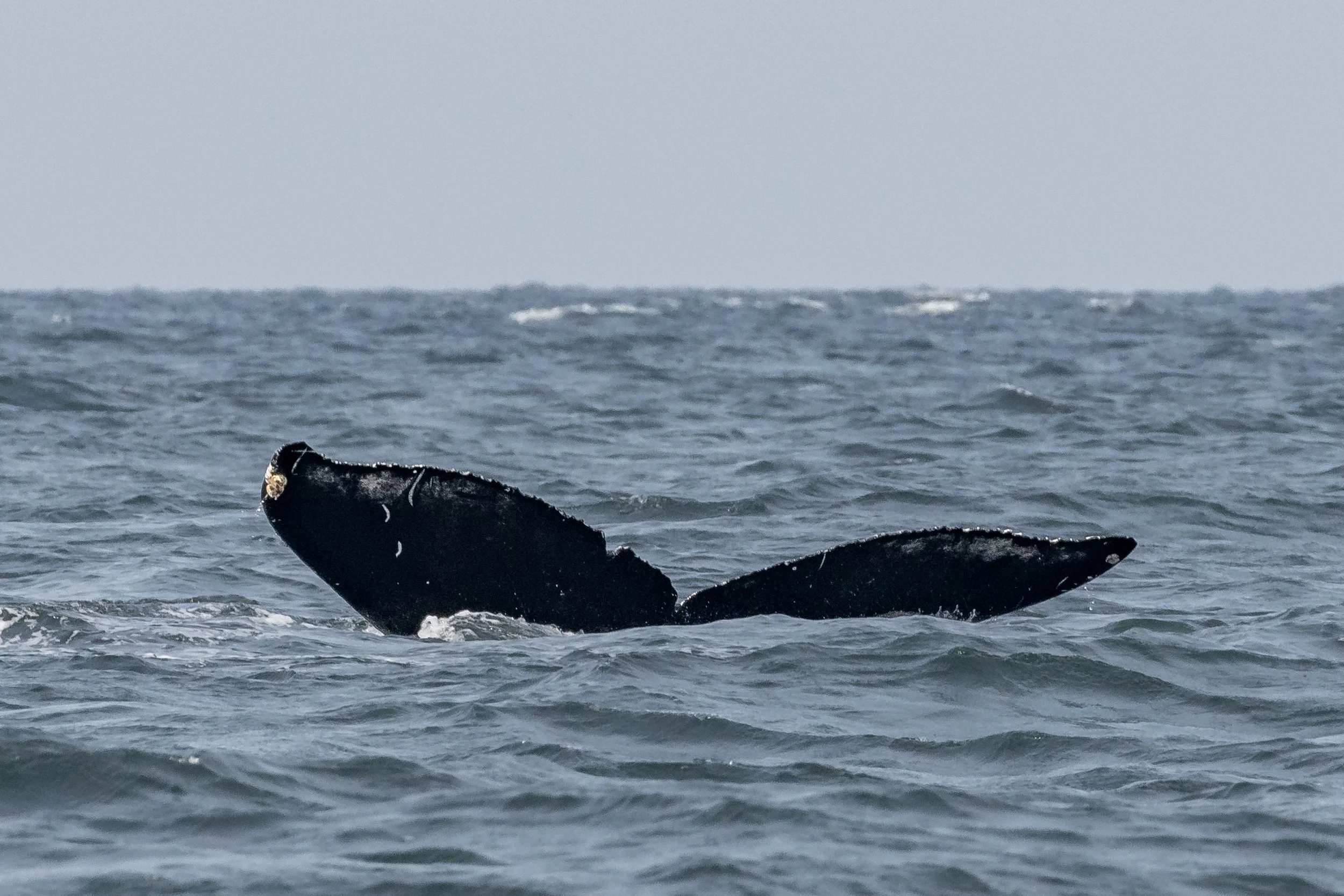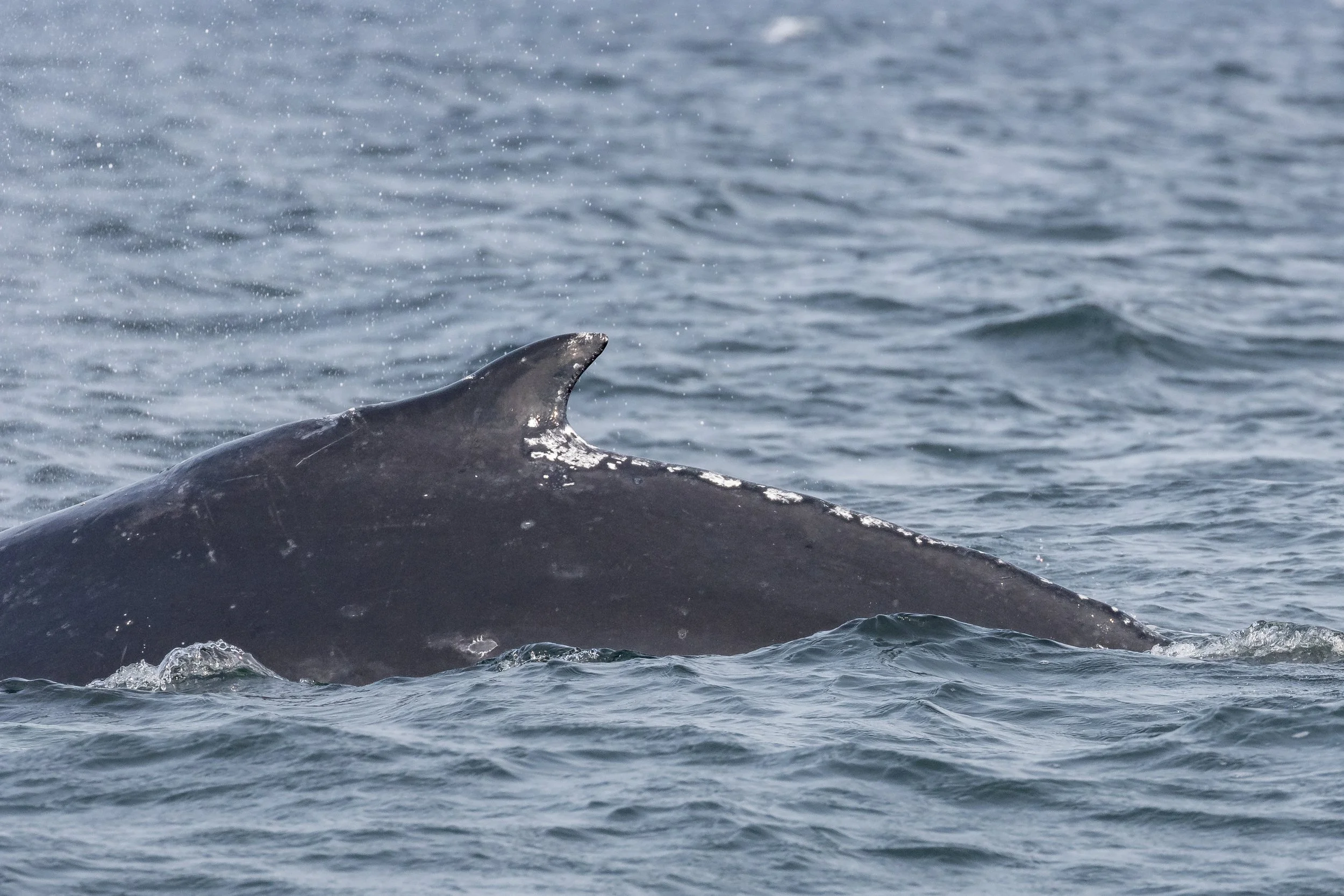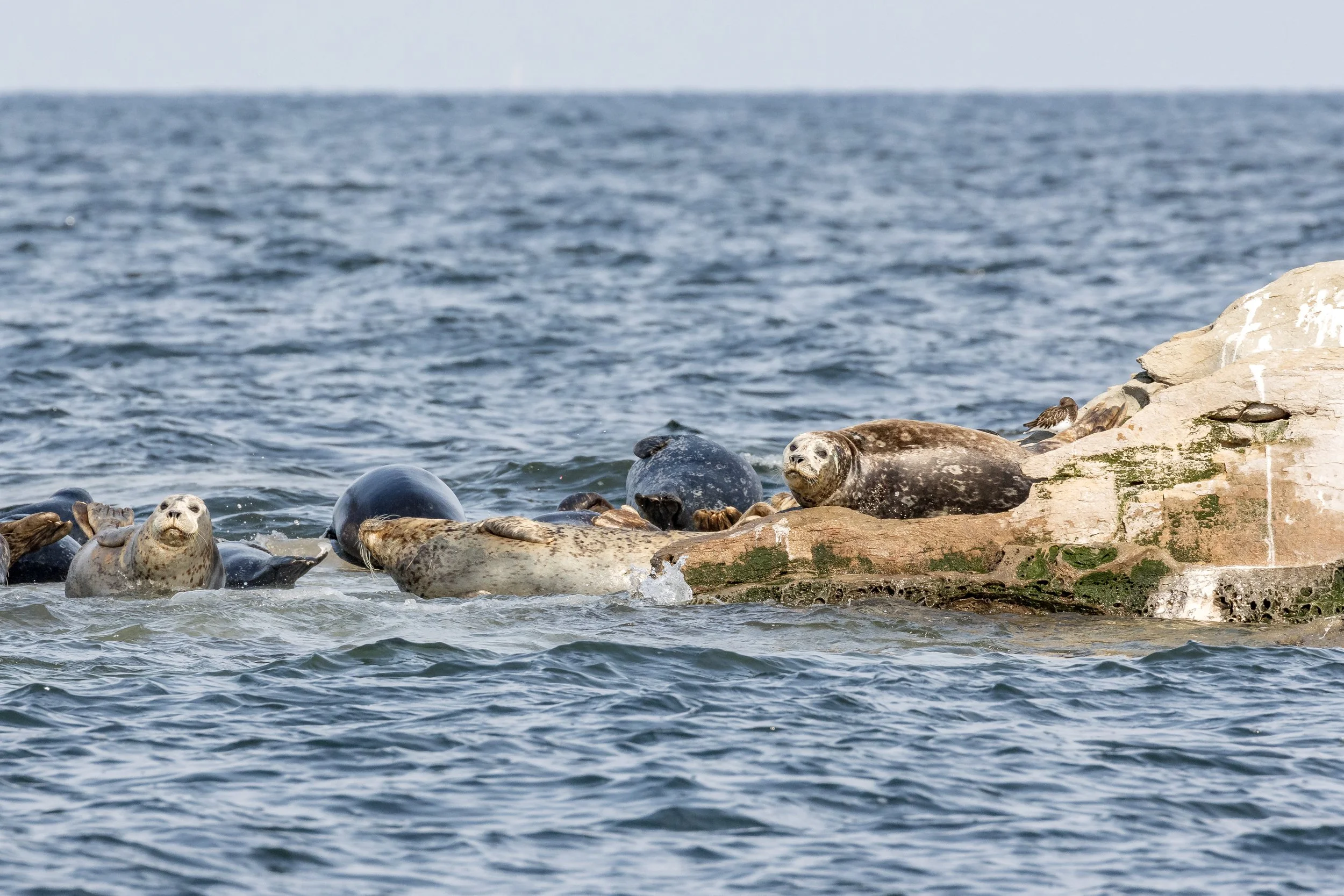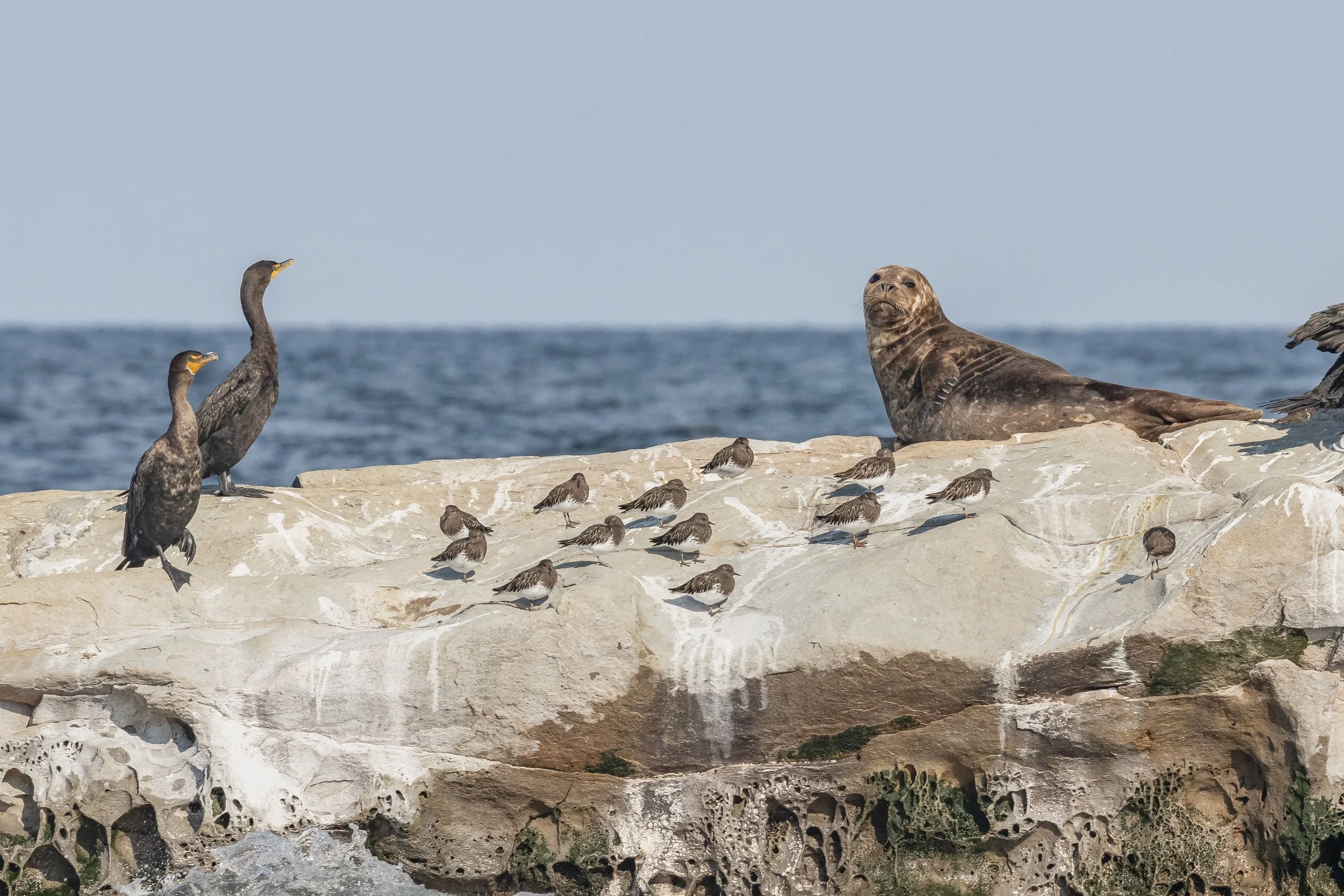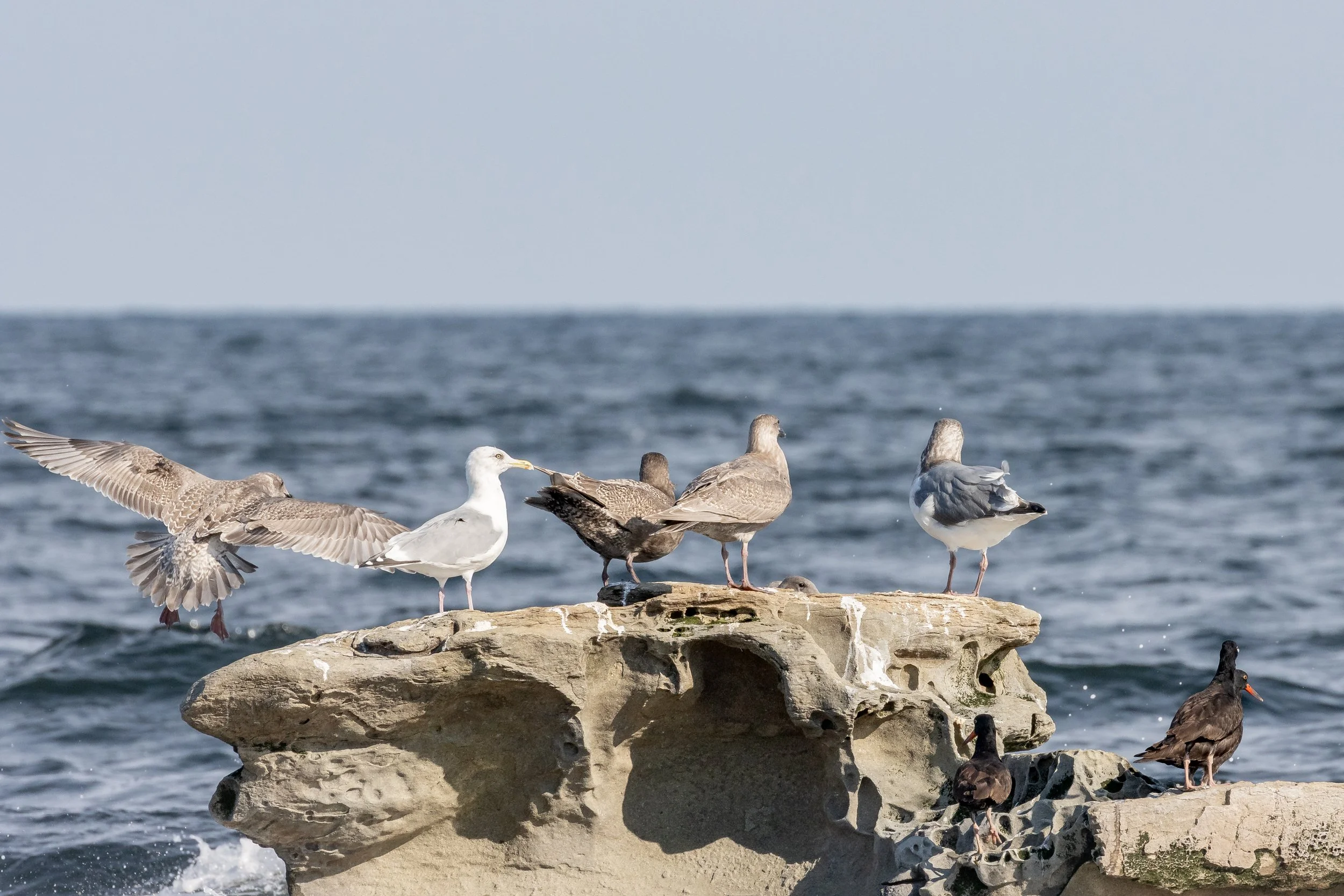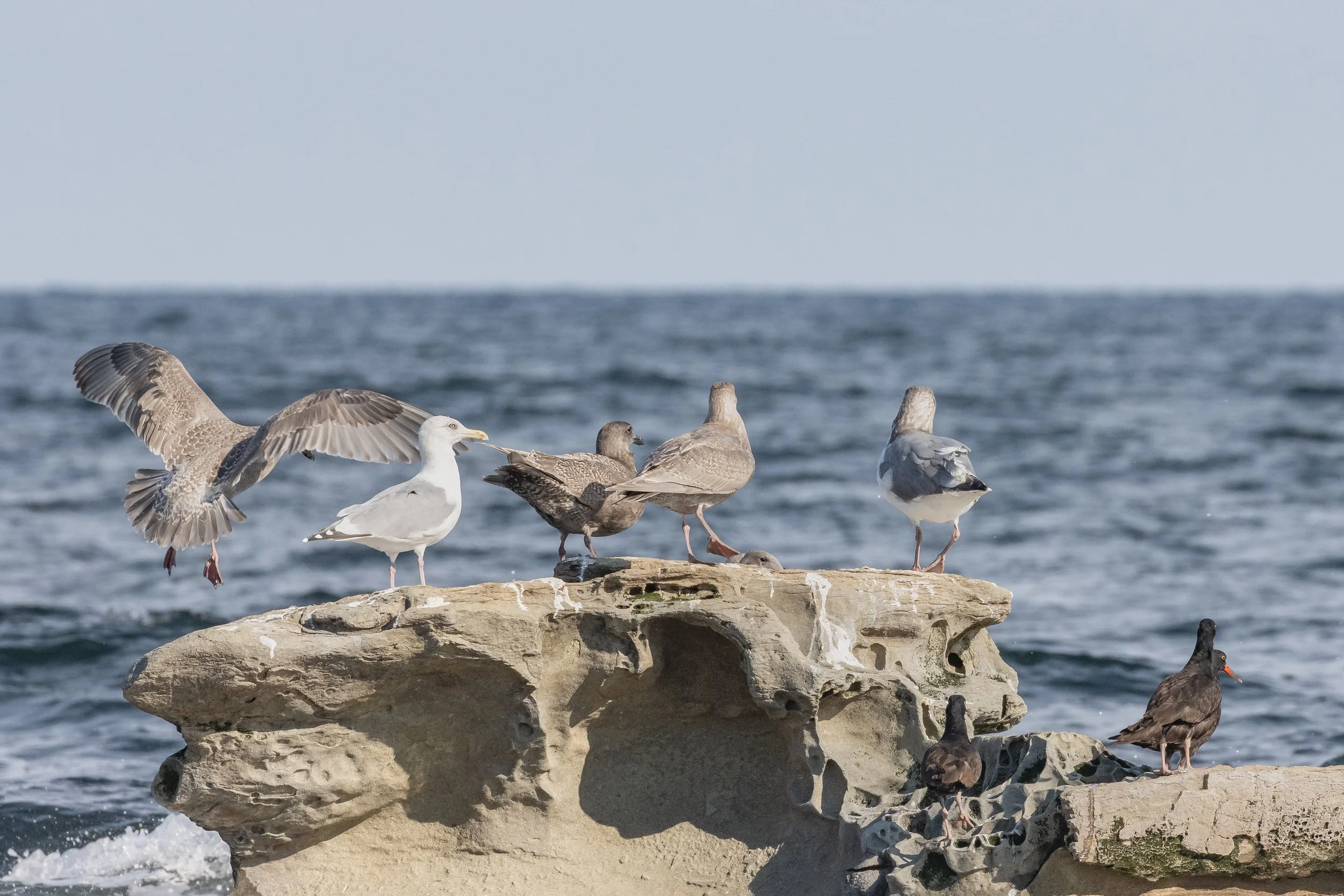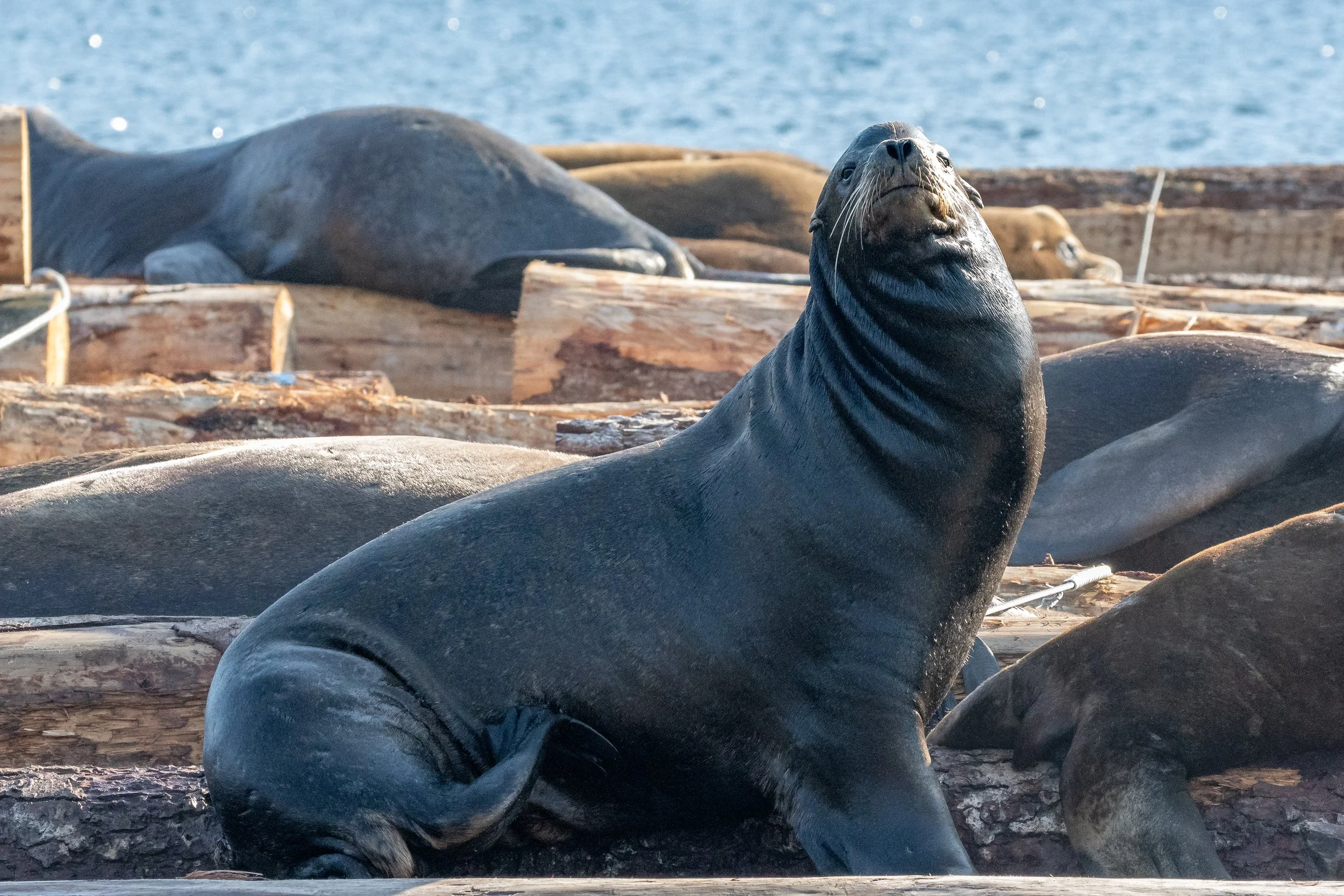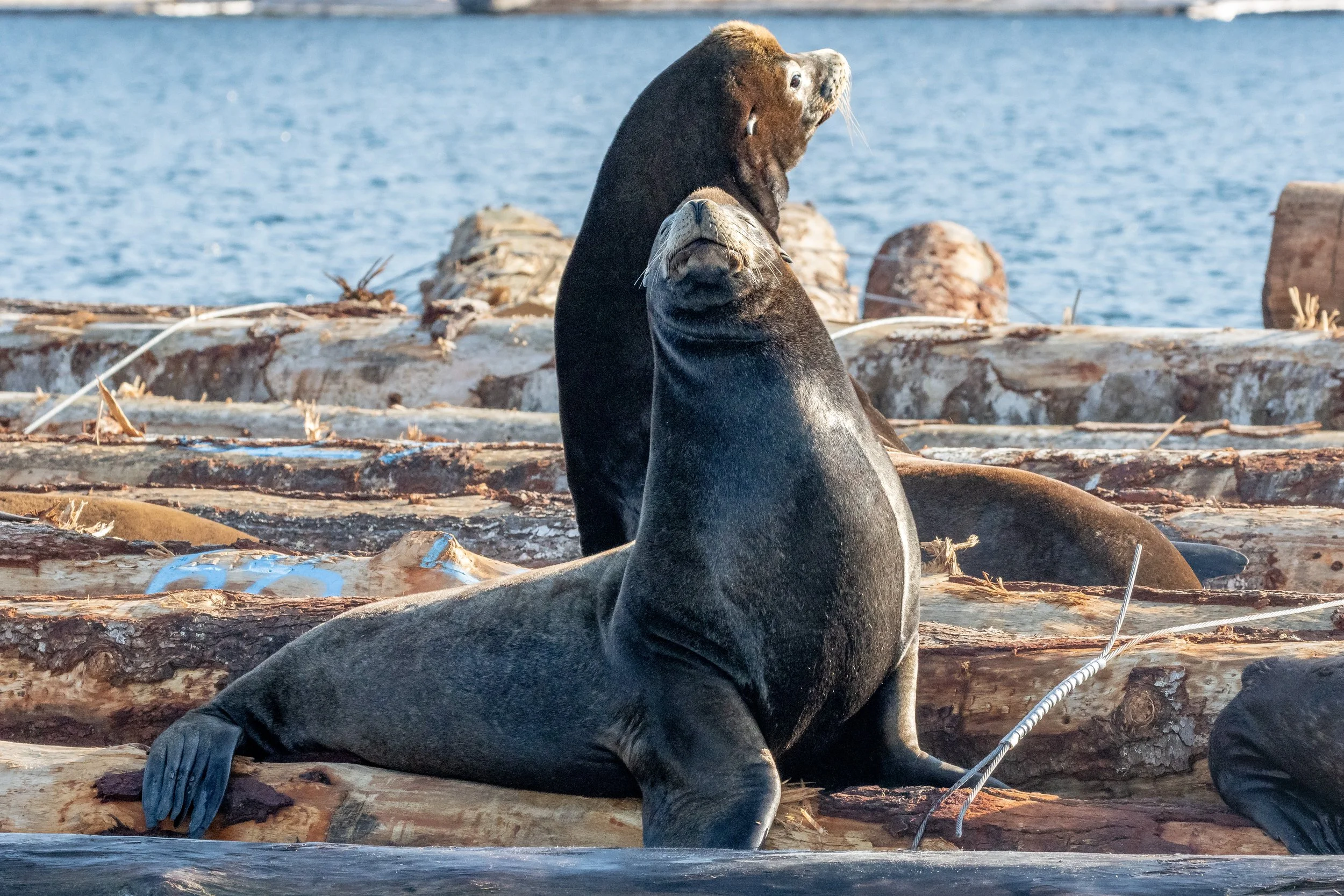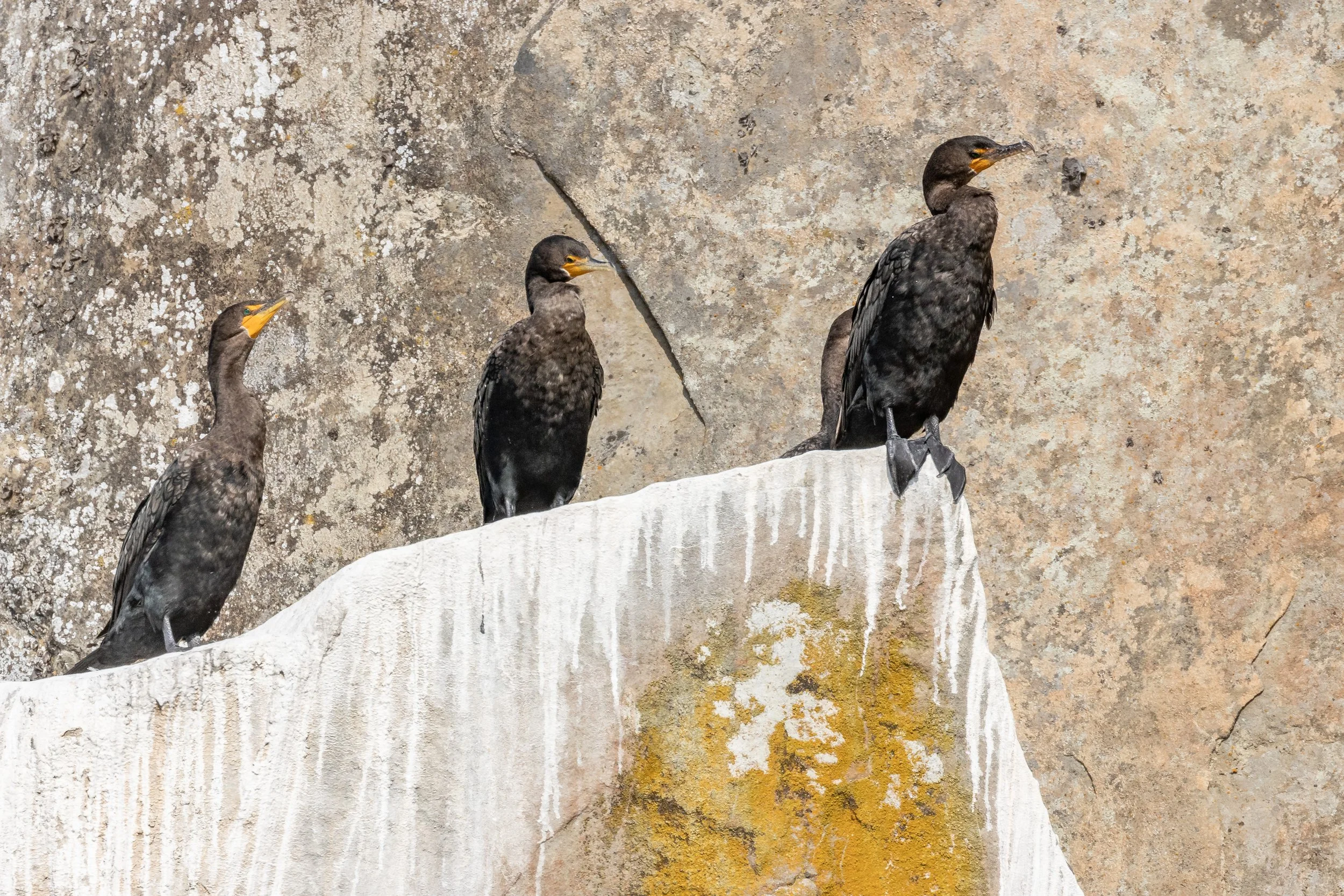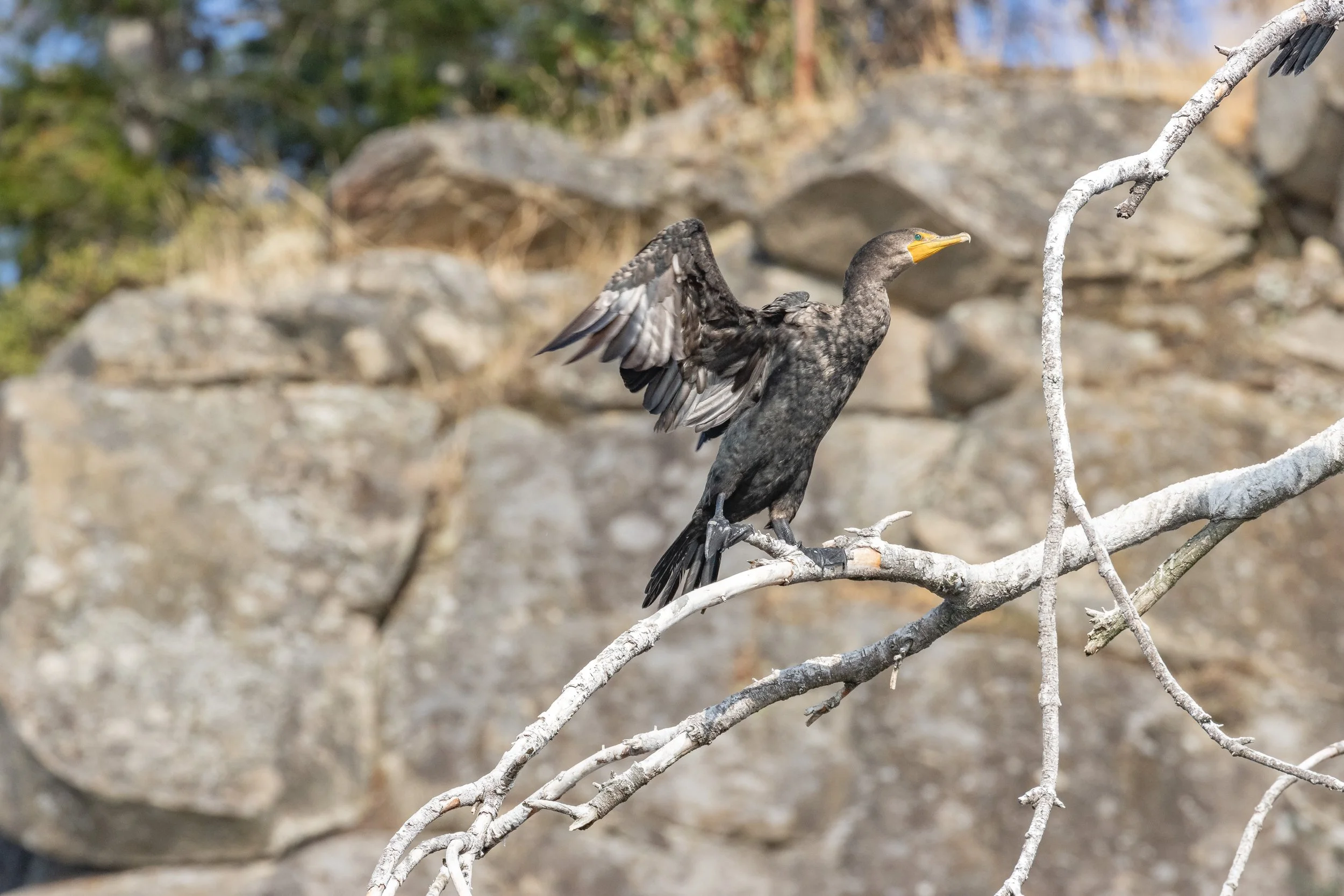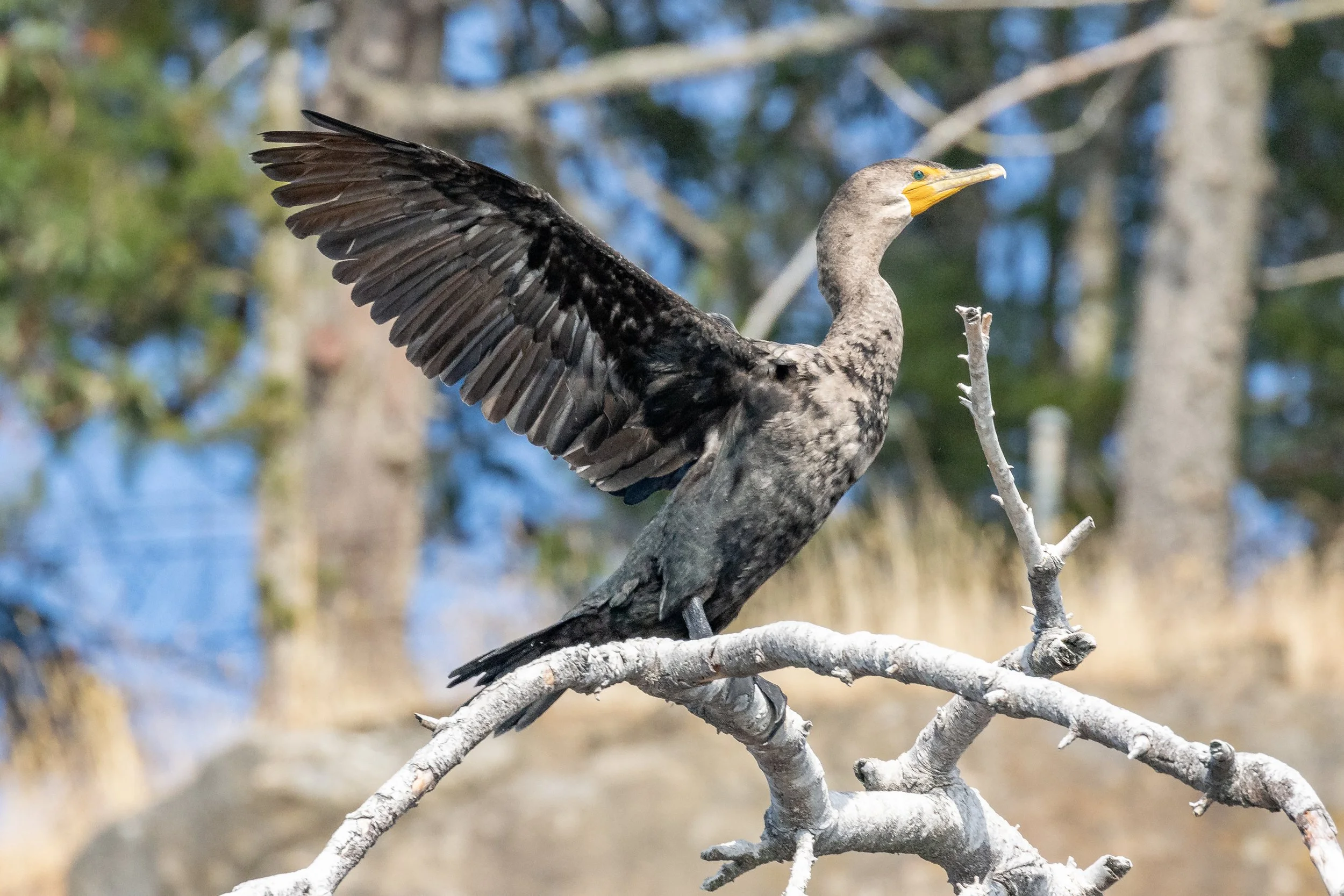October 4, 2022 - 3 humpbacks prepare for the winter migration
Another day of beautiful weather had us on the waters searching for whales. Today we found 3 humpbacks travelling through the Salish Sea! Two Spot (BCZ0432), Harpy (BCY0458 2020 Calf), and Slice (BCX1057 2021 Calf) were foraging the in the waters off Valdez Island along the Tsawwassen ferry terminal line.
We aren’t entirely sure where Two Spot and Harpy spend their winters, as neither has ever been matched to a breeding ground. We also have no confirmed match for Slice but we do know Divot spends their winters in Hawaii, so it’s highly likely that Slice also winters in Hawaii. Regardless of where they are going for the winter, these 3 whales will be fattening up to head south soon. Two Spot is an adult and will be starting to sing soon to let the girls know he’s ready to head to the breeding grounds. Harpy and Slice however are still too young to participate in most breeding ground activities. Making the migration and spending time in the tropics is still important for them as they are still learning and will need to learn the nuances of mating ground etiquette before they are old enough to produce offspring themselves.
Two Spot is an adult male humpback we encounter year after year in the Salish Sea. It’s cool to see them travelling with two youngsters and showing them the ropes. We don’t know much about humpback social lives, as they communicate over long distances and only spend one year with their mother. Outside of that, they have no “pods”. After years of watching them, it does become apparent that whales seem to have friends, as they are frequently found travelling with, or near, the same whales year after year. Unlike Orcas who travel in family units, Humpbacks travel with friends or solo.
In the early 1900s Humpbacks vanished from the Salish Sea and their population numbers around the world plummeted as the global whaling activity peaked. We almost lost these beautiful giants from the face of the earth, however in the late 1960s the petition to make whaling illegal gained traction and by the mid-70s whaling was illegal almost everywhere. Since then their populations have begun to recover and our humpbacks returned in the late 90s. We’ve gone from 0 to over 500 humpbacks that travel through during the summer in a little over 25 years.
Since their numbers have risen studying these animals and their social interactions has become a big focus for many in the marine field. We used to believe they were entirely solitary animals aside from mother and calf relations, but that makes sense when there are only a few hundred animals in a population.
With the populations booming and reaching healthy numbers once again, we are starting to see more and more social interactions and our days of lone humpbacks are becoming fewer.
Some of these whales definitely like their alone time, like Prowler who we encountered the day before. Whereas others seem to be forming groups of juveniles, and we’ve even noticed a trend of adult females hanging out in groups during the years they are pregnant.
It’s hard to know exactly what these whales are doing, and speculate why, when we only get a small surface glimpse into their lives. One day biologists are hopeful we will be able to communicate with these animals and learn all they have to share with us, but until then, their social lives and habits will remain a mystery.
Enjoy the photos of our three whales taken by marine naturalist Janine Van Der Linden.
Left to right: Two Spot (BCZ0432) and Harpy (BCY0458’s 2020 calf). Photo by Janine Van Der Linden.
Left to right: Two Spot (BCZ0432) and Harpy (BCY0458’s 2020 calf). Photo by Janine Van Der Linden.
Left to right: Two Spot (BCZ0432) and Harpy (BCY0458’s 2020 calf). Photo by Janine Van Der Linden.
Slice (BCX1057’s 2021 calf). Photo by Janine Van Der Linden.
Slice (BCX1057’s 2021 calf). Photo by Janine Van Der Linden.
Harpy (BCY0458’s 2020 calf). Photo by Janine Van Der Linden.
Harpy (BCY0458’s 2020 calf). Photo by Janine Van Der Linden.
Harpy (BCY0458’s 2020 calf). Photo by Janine Van Der Linden.
Harpy (BCY0458’s 2020 calf). Photo by Janine Van Der Linden.
Up the nose! Photo by Janine Van Der Linden.
Time to dive. Photo by Janine Van Der Linden.
Harpy (BCY0458’s 2020 calf). Photo by Janine Van Der Linden.
Two Spot (BCZ0432). Photo by Janine Van Der Linden.
Two Spot (BCZ0432). Photo by Janine Van Der Linden.
Slice (BCX1057’s 2021 calf). Photo by Janine Van Der Linden.
Slice (BCX1057’s 2021 calf). Photo by Janine Van Der Linden.
Slice (BCX1057’s 2021 calf). Photo by Janine Van Der Linden.
Harpy (BCY0458’s 2020 calf). Photo by Janine Van Der Linden.
Slice (BCX1057’s 2021 calf). Photo by Janine Van Der Linden.
Two Spot (BCZ0432). Photo by Janine Van Der Linden.
Left to right: Two Spot (BCZ0432) and Harpy (BCY0458’s 2020 calf). Photo by Janine Van Der Linden.
Harpy (BCY0458’s 2020 calf). Photo by Janine Van Der Linden.
Photo by Janine Van Der Linden.
“Rocking” out. Photo by Janine Van Der Linden.
Photo by Janine Van Der Linden.
Photo by Janine Van Der Linden.
California Sea Lion, scratching. Photo by Janine Van Der Linden.
Photo by Janine Van Der Linden.
Time to pose. Photo by Janine Van Der Linden.
What a sit-up! Photo by Janine Van Der Linden.
Cormorants on the Rocks. Photo by Janine Van Der Linden.
Flapping. Photo by Janine Van Der Linden.
Ready for takeoff. Photo by Janine Van Der Linden.

